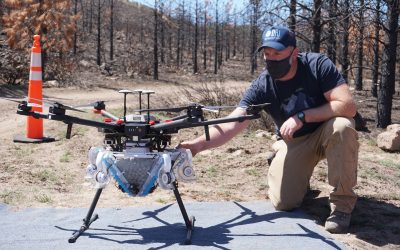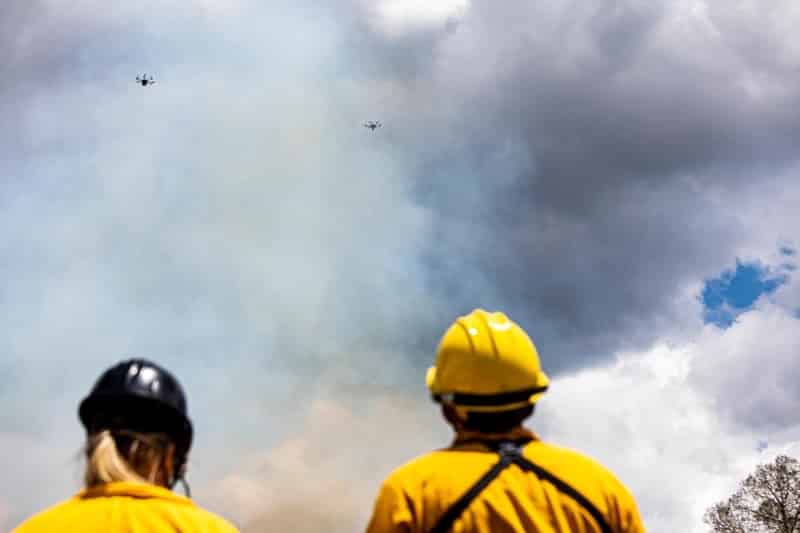Scientists from the Desert Research Institute (DRI) partnered with the Sugar Pine Foundation, Flying Forests, and the Carson Ranger District of the Humboldt-Toiyabe National Forest to test a new method for reseeding burned slopes by drone.
Into the Plume: Advancing Fire Science Using Drone Technology
Photo: Drone pilots look toward their aircraft flying through the smoke. Credit: DRI's Dave Vuono. Fire science research using drone technology at DRI “It was sort of like a deep-sea exploration, with a submarine scanning the ocean floor,” said DRI research technician...

